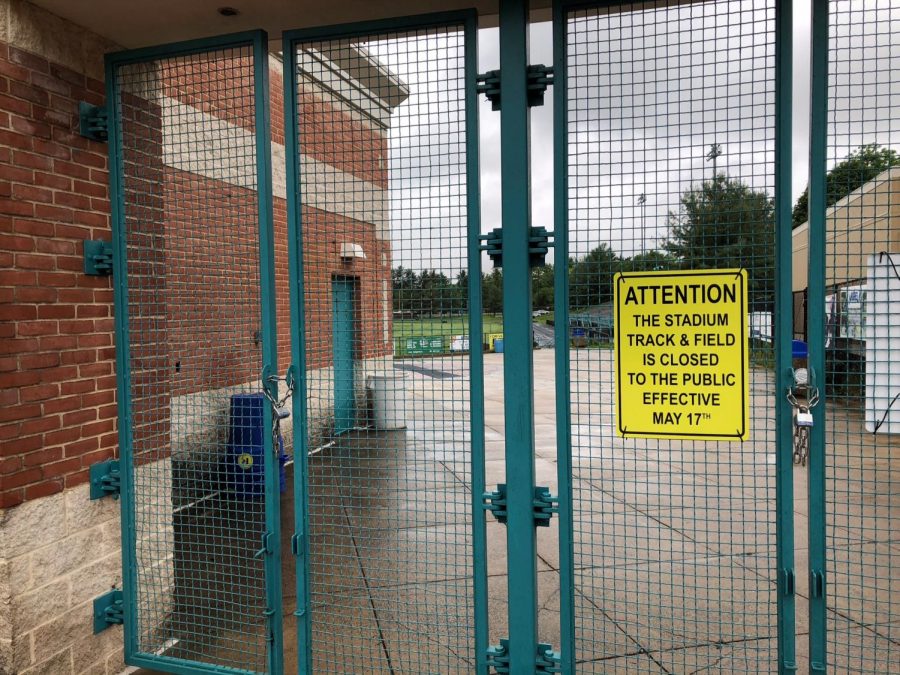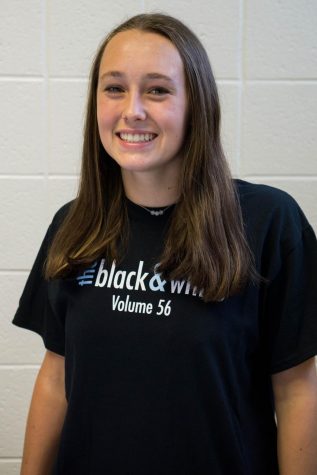BOE votes to move forward with Whitman turf field despite controversy regarding infill
The BOE voted April 24 to move forward with the construction of Whitman’s turf field this summer despite controversy over the infill material. The field will be closed to the public while construction takes place. Photo by Thomas Mande.
May 17, 2018
After repeated delays, the Montgomery County BOE approved the construction of Whitman’s turf field April 24. The field will be installed immediately after the spring sports season, and will be ready for use in the fall, MCPS official Essie McGuire said.
At the April 24 meeting, controversy erupted over the proposed infill material, ZeoFill. Several community members testified before the Board with concerns about ZeoFill’s safety and durability, and others emailed the BOE with similar concerns.
“I believe we don’t have the research,” Burning Tree Elementary School physical education teacher Susan Loftus said at the meeting. “Don’t experiment on children; find the research.”
The County Council mandated in 2015 that all new MCPS turf fields use a plant-based infill; however, after hearing issues with plant-based infills drying out, the Council decided to restart the bidding process, MCPS Public Information officer Derek Turner said. This time the county requested Zeofill infill—made from clinoptilolite zeolite, a naturally occuring mineral.
“It’s a material that is natural, so it meets the spirit of the resolution of the county, but it’s also well adopted so we’re not testing out something that’s completely unheard of,” Turner said.
ZeoFill infill has risen in popularity in the last three years, following the industry’s movement away from traditional crumb rubber. The product was first used in California and has since been used in a number of other states.
Criticism of the proposal focused on the fact that ZeoFill is relatively new, and there are no long term studies proving zeolite is safe. Diana Zuckerman, president of the National Center for Health Research, emailed the Board the day before the meeting, challenging them to provide evidence of studies showing that zeolite is safe for daily use by children.
“There are several types of zeolite but they all have one thing in common: there are no publicly available data indicating that they, or any other materials used in artificial turf, are proven safe for long-term use by children or adults,” Zuckerman wrote in the April 23 email.
Others have also raised concerns about the durability of the material. Industry leader FieldTurf doesn’t use the product because they don’t feel they can offer a warranty on it and count on it lasting 10 years, company representative John McShane said.
Bruce Bagley is a consultant for a professional association of soil scientists and acted as an independent consultant to FieldTurf. Bagley predicted that extensive foot traffic would cause the material to break apart and become increasingly powdery. After prolonged material breakdown, he said the infill would be “like concrete.”
The Gilman School, a private school in Baltimore, has had problems with their zeolite- based infill.
“The zeolite we had on our artificial service has broken down and became almost a paste,” athletic director Laurie Bristow said. “It caked up a lot and then clogged the holes in which the drainage occurs, so that causes a reduction in drainage and also ended up making the surface harder.”
After just a year of using the field, Gilman’s contractor FirstForm said they had received a “bad batch” of zeolite and replaced the infill, Bristow said. However, the same problems continued with the new zeolite infill. More work will be conducted on the field this summer.
The school intends to keep its zeolite and is working to find solutions to their problems, Bristow said.
Despite the concerns voiced by community members, MCPS officials remain confident in ZeoFill. While the product has not been in use long, it’s been vetted by the ASTM, an international standards organization. Major industry organizations such as the Synthetic Turf Council and American Sports Builders Association have also rated zeolite as a safe and legitimate infill material, said Jerry Harper, general manager of Act Global, the company subcontracted to build Whitman’s field.
“If we felt that it wasn’t a safe product, we wouldn’t even entertain doing it,” Harper said. “If we felt like it wasn’t going to last, we wouldn’t entertain doing it either.”
Harper said he had heard Gilman had received the wrong type of zeolite in the first batch that needed to be replaced; he believes their continued issues likely stem from maintenance problems, he said.
Act Global has installed more than 10 ZeoFill fields in California, and has yet to hear of any problems with the infill, Harper said.
The Maryland Soccerplex in Germantown has three Zeofill fields. While the fields have only been in use since March, the staff has been extremely happy with them so far, executive director Trish Heffelfinger said.
It takes about six weeks for the ZeoFill to work its way into the the fibers, during which time it rests on top of the fibers and can get white dust on the players’ shoes, Heffelfinger said. However, once it’s fully incorporated, you can’t see the infill at all, and the Zeofill remains set in the fibers, eliminating the “splash” that comes with crumb rubber infill, she said.
Heffelfinger said ZeoFill’s pros—no pellet splash, cooler surface temperatures and natural origin—outweigh the drawback of its integration time.
“It’s certainly something I would recommend to others to install,” she said.
Many Whitman community members are happy to have their long awaited field.
“We’re thrilled,” sports booster club president Elissa Ginsky said. “This has been in the process for three and a half years, and I think it’s going to be great for our athletes.”
Sam Shiffman and Jessica Buxbaum also contributed to this report










Diana Conway • Oct 12, 2019 at 10:54 pm
1. The best synturfs money can buy with the best cared-for athletes (the NFL) have found a foot & ankle injury rate TWICE as high on synturf as on grass, per a four-year study by the NFL of all 32 teams. The Ravens orthopedic surgeon Dr. Greg Guyton testified to this last spring in Annapolis. Happy to send the link to his two-minute testimony, March 2019.
2. A study published in 2018 of one million HS male football players found “Turf outweighed all other mechanisms of injury, including helmet-to-helmet and grass. Almost 90% of all injuries occurred on turf-based surfaces, according to Burkhart. “You can exponentially see the difference in terms of the amount of injuries occurring on turf versus anywhere else,” he said. https://www.healio.com/orthopedics/sports-medicine/news/online/%7B095e875c-8c2c-4f31-8340-b0aaf576a4ce%7D/high-school-football-concussion-risk-greater-for-young-athletes-and-on-turf?fbclid=IwAR31G1t71umvALIExut1nd9wzxM-WnMRo-h77BjpxmYWoS7YOD05Sa42qNI
3. Regardless of infill the plastic grass contains PFAS, a ‘forever chemical’ that bioaccumuates, per new reporting by The Intercept and The Boston Globe. Used in teflon, flame retardants, water-repellents.. https://theintercept.com/2019/10/08/pfas-chemicals-artificial-turf-soccer/
4. MCPS paid to dump the RMHS used synturf on the side of a river in a low-income minority community in Baltimore County. That’s 250+ tons of toxic plastic waste with 40,000 shredded waste tires. What is the plan for Whitman’s field? We can supply photos of the RMHS field in its ‘responsibly repurposed’ role: 250+ tons of toxic plastic plus 40,000 shredded waste tires going into the soil and into Bird River.
UPSHOT: There is unrefuted evidence on the heat, toxicity, injury, cost, unregulated disposal and liability exposure generated by synturf. Industry’s defense is to cite absence of –definitive– proof of harm: show us a body count. This smacks of asbestos, leaded gasoline , paint and water, cigarettes, plus DES, agent orange and now BPAs etc.
There will be at least two bills in Annapolis this spring on the funding of synturf, and on regulating disposal.